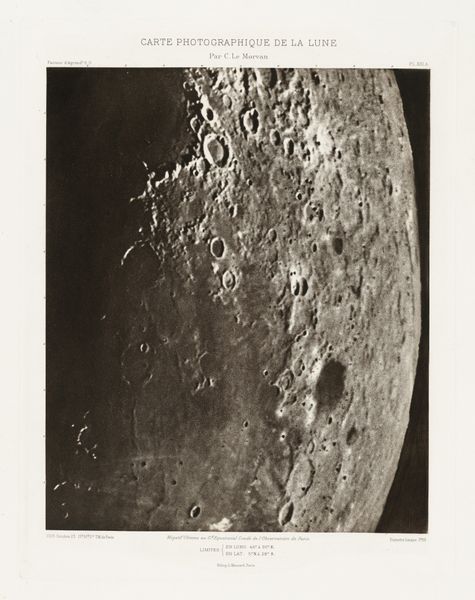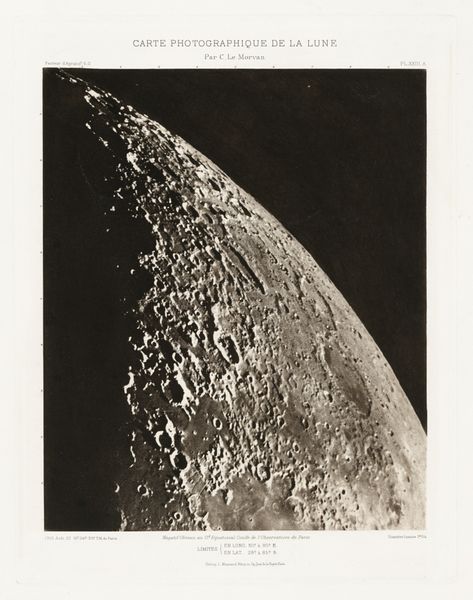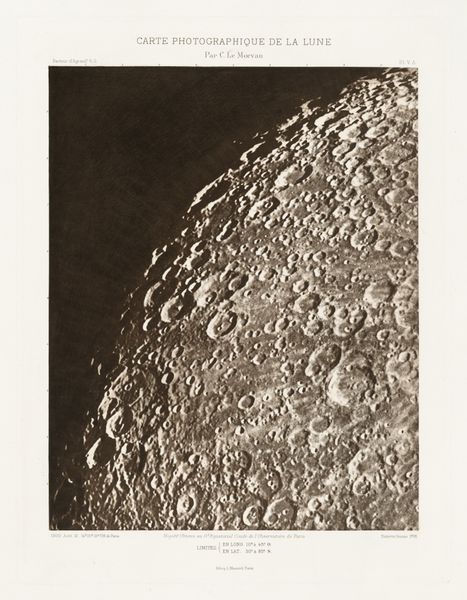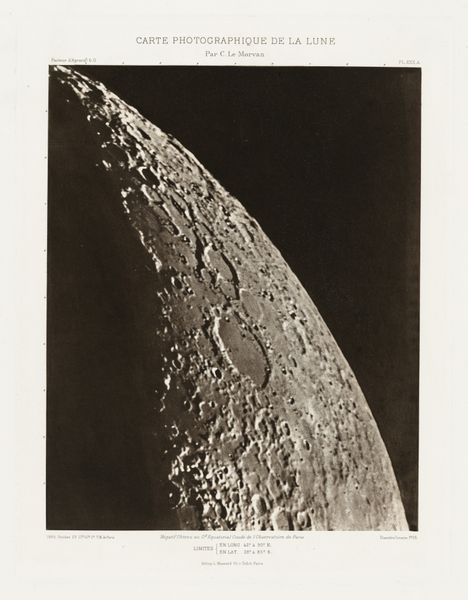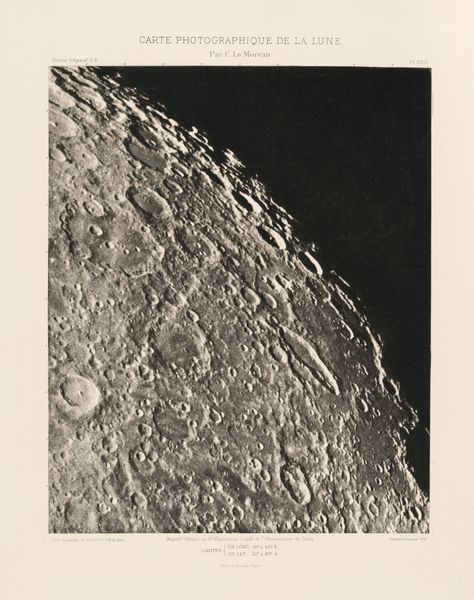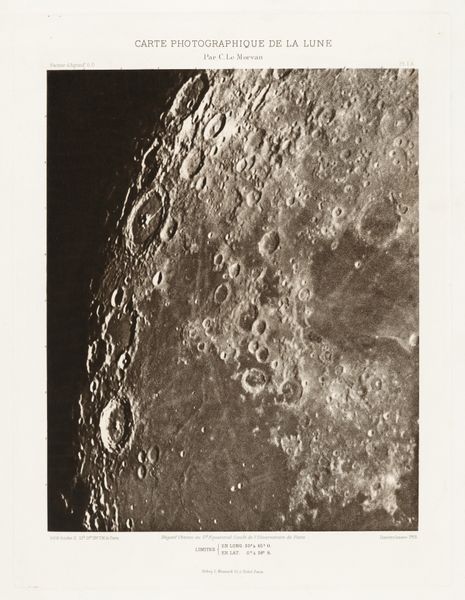
Carte photographique de la lune, planche XV.A (Photographic Chart of the Moon, plate XV.A) Possibly 1904 - 1914
0:00
0:00
print, photography
# print
#
landscape
#
photography
#
geometric
Dimensions: image: 31.1 × 25.5 cm (12 1/4 × 10 1/16 in.) plate: 38.9 × 29.5 cm (15 5/16 × 11 5/8 in.) sheet: 49 × 37.9 cm (19 5/16 × 14 15/16 in.)
Copyright: National Gallery of Art: CC0 1.0
Charles Le Morvan made this photographic chart of the moon using a photographic process that captures light and shadow, transforming the moon's surface into a landscape of endless exploration. Look closely at the texture, the way light pools in the craters, and fades across the plains. The shades of grey in this image, the almost infinite range from dark to light, it's almost painterly. There’s a cluster of craters in the bottom left corner, piled together to create this intensely concentrated area of tone and texture. This is where the piece comes alive, the density of the image feels like it’s about to take off. It reminds you that even something as seemingly distant as the moon can be brought right up close. Le Morvan's detailed approach reminds me a little of Vija Celmins' obsessive depictions of the night sky and the ocean’s surface. Both artists share a commitment to revealing the beauty in repetition and the sublime in the everyday. Photography and painting both have this ability to show us something new, to encourage us to look and look again.
Comments
No comments
Be the first to comment and join the conversation on the ultimate creative platform.

